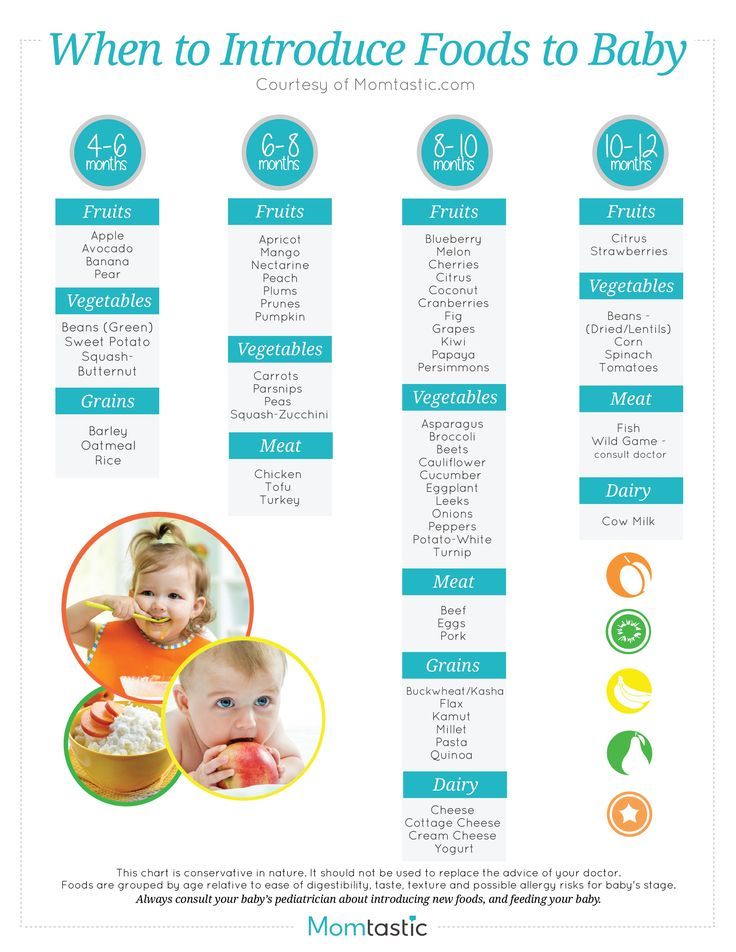Steaming vs boiling vegetables for baby food
Making Your Own Baby Food
Read time: 7 minutes
What to know about making your own baby food- Advantages to making your own baby food purees
- Supplies you need to get started
- Cooking methods to make homemade baby food
- Baby food puree recipes to get you started
Once your little one is ready to start solids, the next question often asked is: Do I make baby’s food or buy it? The store offers many baby food options, but making at least some of the food at home may allow for even more variety.
With a little bit of planning and use of some of the utensils you likely already have around the house, making homemade baby food doesn’t have to be as daunting as it sounds.
What are some advantages of making your baby’s pureed food?- Greater control over what you feed your baby: You can use a wider variety of ingredients that are not always available in store-bought baby food.
1,10
- Money saver! Did you know the price of 2 to 3 containers of baby food is almost equal to that of 4 to 6 pears, which can create enough pureed food for 10 or more meals for your baby?1
- May help reduce picky eating: Repeatedly offering a greater variety of foods, as well as foods the family eats (with minor changes in textures and ingredients to meet your baby’s needs), may help make your little one a more adventurous eater, even into childhood.2
Read more: Introducing Solids: First Foods & Textures
You might be worried that you need an elaborate kitchen setup and all new kitchen tools to make your baby’s purees, but the good news is that you likely have many of the tools already needed to whip up some homemade baby food!
Here is a list of some of the tools that can be used to make homemade baby food:- Vegetable peeler
- Pot for boiling or steaming
- Sheet pan for baking
- Steamer basket
- Blender or food processor
- Fork and knife
- Food mill
- Potato masher
- Strainer
- Ice cube trays
Following proper food safety is especially important when cooking for children and especially for baby’s first foods. 3 Babies are more prone to foodborne illness than older children or healthy adults, so always wash your hands, rinse the food items, clean your work area, cook foods to their recommended internal temperatures, and avoid cross-contamination.3
3 Babies are more prone to foodborne illness than older children or healthy adults, so always wash your hands, rinse the food items, clean your work area, cook foods to their recommended internal temperatures, and avoid cross-contamination.3
For more specifics on proper food safety protocols, see Food Safety for Babies and Toddlers
What cooking methods should I use when making baby food?There are many cooking options available for pureeing food for your baby. Each method has pros and cons in terms of ease and retention of nutritional value:
- Steaming: A very popular (and easy!) method, steaming allows for minimal nutrient loss and the leftover water can be used as stock for pureeing.4
- Boiling or Stewing: While also convenient, this cooking method results in greater nutrient loss into the surrounding water. To recoup these nutrients, you can use the cooking water when you make a puree or broth.
 4
4 - Baking or Roasting: Great for making large quantities in the oven. Baked food items retain a good amount of their nutrients.4,5
- Microwave Cooking: Super easy but mainly best used for only small quantities. Be aware that microwaving may lead to uneven cooking and hot spots in the food or liquids.6
- Pressure Cooking: This technique may require additional kitchen equipment but retains much of the foods’ nutrients because this method uses very little water and is fairly quick.5
- Grilling: Babies and small children can eat grilled foods. When grilling, aim for a low temperature and avoid burning or charring meats.7
- Sautéing and stir-frying: Another fast and flavorful option!
*Note that the longer you cook a food for and the higher the temperature used in cooking, the more nutrients may be lost.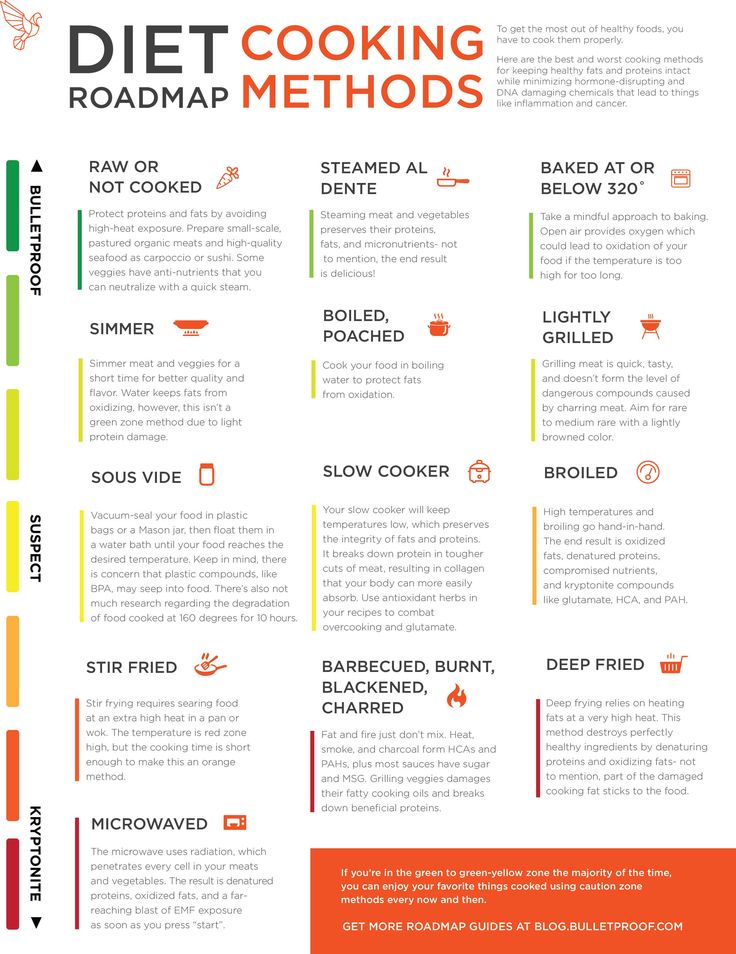 5
5
Fruits, vegetables, grains, and meats can all be cooked and pureed into baby food. In fact, the American Academy of Pediatrics (AAP) states there is no specific order that foods should be introduced.8
Some foods need to be avoided as they are choking hazards. Read more on Preventing Choking
Here’s how to prepare homemade foods for your baby:VegetablesAlways cook vegetables before serving to your baby – steaming, roasting, or baking are the best methods. Once cooked, softer vegetables like sweet potatoes and squash need only be mashed with a fork or potato masher.
If the vegetable has a thick skin, like green beans or peas, push the cooked food through a strainer or sieve to remove the tougher parts. You can also just use a very powerful food processor or blender to puree the entire vegetable once cooked!
Try adding herbs such as oregano, rosemary, or dill; or spices such as cumin, ginger, or curry powder.
Try one of these vegetable puree recipes: Avocado and Pea Puree or Root Vegetable Puree
FruitsCertain fruits, like avocados and bananas; or very ripe pears, mango, and peaches; require no cooking before feeding to your baby. Simply peel then mash them up with a fork or blend quickly.
Other harder fruits, like apples, firmer pears, and underripe nectarines and mangos can be baked or steamed to soften them up for a puree. Simply halve or quarter your fruit of choice, remove the skin, remove the core, pit, or seeds. Place the cut fruit in a shallow baking dish with about 1 inch of water in a 400F degree oven.
Bake for 20-40 minutes, or until fruit is tender, then allow to cool before pureeing in a blender or dicing for finger food.
You can even sprinkle the fruit with ginger, nutmeg, or cinnamon!
Fruit puree recipes to try: Orange Sunny Soup or Beet and Cantaloupe Puree
Grains and CerealsYou can make your own baby cereal at home using whole grains such as oatmeal, brown rice, or barley.
Finely grind the uncooked grain using a coffee grinder, food processor, or blender. Then cook the powder in water for 15 minutes until you get a thin, soupy consistency. You can also cook the raw grain whole, as you normally would for yourself, and then puree or mash. But this method can sometimes create a pasty consistency.
Try one of these homemade cereal recipes: Whole Ancient Grain Baby Cereal or Strawberry Quinoa Cereal
MeatYes, you can even puree meat for your baby using a food mill or blender. Cook the meat to well-done before pureeing (but avoid luncheon, cured, and smoked meats at this stage due to the high salt and additive content).9
Try one of these meat based baby food recipes: Avocado and Chopped Chicken or Ginger Carrot, Sweet Potato Mash and Lean Beef
.
If you have questions on how to make these recipes, or are looking for more ideas, reach out to our team of registered dietitian nutritionists and lactation consultants for free! They’re here to help on our free to live chat from Monday through Friday, from 8am–6pm (ET).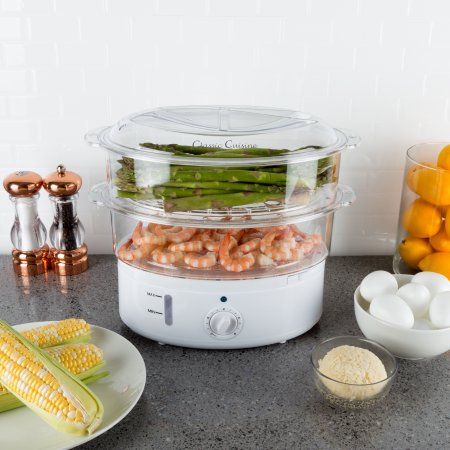 Chat now!
Chat now!
Our little one’s food preferences are formed early in life, so avoiding or severely limiting these strong added flavors before the age of one is important. In fact, the 2020-2025 Dietary Guidelines for American recommends no added sugar at all before the age of 2 years.12
Additionally, you want your baby to experience and get used to the true flavors of food so that they are more likely to accept them in the future!11
Read more: Minimizing Added Sugar
Find the right texture for baby’s pureeFind the right consistency for your purees. Most babies start with thinner purees and work their way up to thicker ones as they learn to manage food in their mouth and then swallow.
- If you need to thin your puree for a younger baby, try adding reserved cooking water, no-salt-added veggie stock, prepared formula, or breastmilk.

- If you need to thicken up your puree for an older baby, it can sometimes be as simple as adding less liquid. You can also try adding baby cereal, plain whole milk yogurt, wheat germ, mashed low-sodium cottage cheese, mashed banana, pureed sweet potato, or pureed tofu.
Note that food textures can – and often do – change in the freezer. For example, certain fruits and vegetables like blueberries, pears, and eggplant contain a lot of water and can become quite runny when thawed. You may need to tinker with the consistency either before or after freezing some of these homemade purees.
Advance textures when your baby is readyAdvancing textures steadily as your baby is ready will help develop their oral motor skills as well as prepare them to be more adventurous eaters.11
Start with thinner purees and then move to thicker purees over several weeks as your baby’s chewing and swallowing skills becomes more coordinated.
Once your little one can handle thick purees, it’s time to move onto lumpy purees as they prepare for soft solids.
Read more: Introducing Solids: Different Approaches and Strategies
Storing your homemade baby foodAfter making a batch of baby food, either use the food right away or freeze it in small portions in an ice cube tray. Once frozen, pop out and place into a freezer-safe air-tight bag to help save room in your freezer. Be sure to label the bag with type of food and the date it was made.
For more information: How to Store Baby Food
Let’s Chat!We know parenting often means sleepless nights, stressful days, and countless questions and confusion, and we want to support you in your feeding journey and beyond.
Our Happy Baby Experts are a team of lactation consultants and registered dietitian nutritionists certified in infant and maternal nutrition – and they’re all moms, too, which means they’ve been there and seen that. They’re here to help on our free, live chat platform Monday through Friday, from 8am–6pm (ET). Chat Now!
Chat Now!
Read more about the experts that help write our content!
For more on this topic, check out the following articles:
Introducing Solids – Signs of Readiness
Introducing Major Food Allergens to your Infant
Introducing Solids: Baby Led Weaning
How to Cook Homemade Baby Food
Image: Getty
Did you know cooking for your baby is just as easy as cooking for the whole family? There are many ways to heat and thaw homemade baby food. On this page we will tell you all about heating and thawing your homemade baby food cubes.
Cooking Baby Food – What are the best cooking methods for preparing homemade baby food?
When venturing into the world of baby food making, one of the most often asked questions is “How should I cook the foods that I will be making for my baby to maintain the most nutrients and flavor?”
There are several ways that you can cook foods for homemade baby food.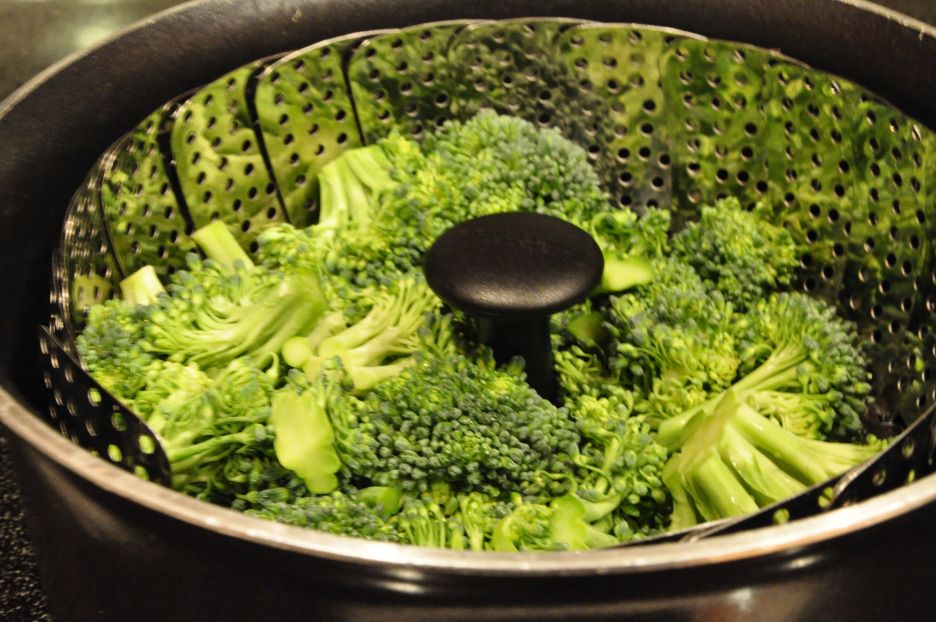 This page will discuss the ways of cooking that are best for fruits, veggies and meats.
This page will discuss the ways of cooking that are best for fruits, veggies and meats.
Cooking Fruits and Veggies for Homemade Baby Food
Baking/Roasting and Steaming are the preferred methods to use when cooking homemade baby food (and your food too!) with boiling in scant amounts of water being the second best method.
Foods such as sweet potato, white potato, carrots, parsnips and squash, peaches and pears are wonderfully flavorful when baked.
** Most pediatric sources recommend cooking fruits for babies who are under 8 months old. Bananas and avocado are an exception. For infants who start solids prior to 6 months old, cooking fruits is a good idea. Cooking fruits breaks them down thus enabling easier digestion in an immature tummy. An older baby will be better able to handle the fibers and sugars of raw fruits than will the baby who is younger and just starting on solids. There are many babies who do quite well with raw fruits from 6 months of age on so use your best judgement and consult your pediatrician about the need to cook fruits. Visit Baking Fruits for Baby for some tasty baked fruit recipes and ideas.
Visit Baking Fruits for Baby for some tasty baked fruit recipes and ideas.
Cooking Meats for Homemade Baby Food
Baking is preferred as the most nutrients are retained. Typically, meat purees are best made with plain water as using the natural juices may make the taste too strong for baby; adding a fruit or veggie puree is a great way to introduce the flavor of meats.
Crock pot or Slow-Cooker to Cook Meat for Baby Food – Using a crock pot or a slow-cooker to make meats for baby is a wonderful way to make a multi food combination meal. You may toss any foods that you want into the crock pot with the meat.
One of our favorite things to do is to take 3 chicken breasts (diced), a few carrots (diced and peeled), a diced onion and some other veggies and toss the whole lot into the pot. Add 4 or 5 cups of water and seasonings of your choice. All you need to do is turn the crock pot or slow-cooker on low and within 6-8 hours you have a nice meal.
If you poach or use a crock-pot (cook meats in liquids) and then throw away the juices, you are tossing out some nutrients as well so be sure to try and add those back into the finished meal!
I have included information regarding cooking in the microwaving due to the fact that many parents prefer to cook their foods this way. I believe that baking and steaming are the best cooking methods for optimal nutrient retention; microwaving food should be a last option whenever possible.
I believe that baking and steaming are the best cooking methods for optimal nutrient retention; microwaving food should be a last option whenever possible.
Methods of Cooking for Baby Food
Below is an outline of the different methods of cooking food and how nutritional content is affected. It covers all forms of cooking.
Steaming – This is one of the most preferred methods of cooking. By this method, nutrient loss in minimal. Left over water may be used as stock and for pureeing.
The longer any type of food is exposed to high temperatures and immersed in water, the higher the nutrient loss. (Can you imagine the nutrient loss in commercial baby foods that are cooked at sky-high temperatures to help prolong shelf life?.) Steaming as a cooking method helps foods retain their levels of water soluble vitamins too. Vitamin C is an important water soluble vitamin that helps aid in the absorption of iron. Steaming allows the foods to be surrounded by steam rather than soaked in water.
Boiling and Stewing – The disadvantage; it leads to loss of nutrients (esp. water soluble vitamins (B&C) and minerals). Loss can be limited by using the needed amount of water for cooking/for required time. Left over water could be used as stock and for pureeing.
Baking or Roasting – Baking or Roasting is cooking by dry heat in the oven. The advantage – large quantities of food can be cooked and there is a limited loss of nutrients and the food is easily digestible.
Microwave Cooking – The disadvantages of microwave cooking are that food is cooked in small quantities and some foods may lose nutrients at a very high rate. The flavor and nutritive values of most vegetables are good in comparison with other methods.
You may use a microwave for cooking if you prefer – the main disadvantage to this is that large batches of foods typically cannot be made at one time; many people find that the use of a microwave is unhealthy and potentially dangerous.
The amount of nutrients that are “destroyed” by a microwave varies by the type of food that you are cooking. There are some foods whose nutrients are retained better when microwaved than when steamed or boiled for example. Broccoli is said to be one food that may lose a vast majority of its nutrients when microwaved, more so than any other vegetable. However the study done on broccoli and the microwave is being negated due to the faulty methodology used.
Pressure Cooking – Loss of nutrient is less in this method since only little water is used.
Frying – Do frying only if required. Shallow frying is much better than deep frying. Deep frying at high temperature can produce toxic chemicals such as peroxides, aldehydes, ketones, hydroperoxidases, cyclic monomeres etc. Preferably avoid reusing the fried oil. We prefer to “fry” in a small amount of olive oil – rather like sauteeing.
Grilling – In this method, if the food is burnt with coals and fire, it can cause carcinogenic effect. Babies and small children should not be served grilled foods constantly.
Babies and small children should not be served grilled foods constantly.
Remember, always consult with your pediatrician regarding introducing solid foods to your baby and specifically discuss any foods that may pose allergy risks for your baby.
This site complies with the HONcode standard for trustworthy health information:
verify here.
SHARE ON FACEBOOK SHARE ON PINTEREST
How and what to cook for children in a double boiler?
Breast milk is valuable for feeding babies from birth. If for some reason breastfeeding does not work out, then the children switch to artificial nutrition.
But all babies, without exception, closer to 6 months (babies later, artificial babies a little earlier), begin to taste almost adult food. At this time, the introduction of the first complementary foods is recommended. These are easy-to-digest, healthy dishes - vegetables, fruits, cereals, sour milk, meat, fish, boiled or steamed.
Modern mothers more and more often use convenient kitchen appliances – a double boiler to prepare first foods.
What is a steamer?
There are many models of electric steamers, but they all share the same design and function.
Loading...
The steamer is a multi-level construction of bowls (baskets) stacked on top of each other. The lower container serves to fill with water and further steam generation in the structure. The upper basket (there can be from 1 to 3-4) has a perforated bottom, products are placed in it. If the double boiler has several containers, then several dishes can be cooked in it at the same time - the products are laid from the bottom up, depending on the cooking time. The top bowl has a lid.
Depending on the model of the steamer, the appliance may have additional functions:
- a timer for delaying the start - it is convenient for mothers when by a certain time, for example, after a walk, there will be cooked food in the steamer;
- hole for topping up water;
- separate container for herbs and spices;
- different cooking programs.

What are the health benefits of steamed food?
Steam cooking allows you to save the maximum amount of vitamins and biologically active substances in the products.
This cooking method:
- uses a lower temperature than baking or frying;
- part of water-soluble vitamins, minerals does not pass into the broth and is not destroyed, as during cooking;
- Meals do not require the mandatory addition of vegetable or animal oils, so cooked foods are easily digestible and help prevent excess weight;
- steam dishes do not contain carcinogenic substances that irritate the gastric mucosa, which are formed when the oil is heated to high temperatures, as during frying;
- Steamed dishes have an optimal consistency. In addition, they retain the structure of dietary fiber and fiber, which is necessary for the normal functioning of the intestine, stimulation of its peristalsis and prevention of constipation;
- this type of cooking allows you to preserve the natural appearance, taste and aroma of food as much as possible.
 It is steam dishes that contribute to the formation of proper eating behavior in the baby.
It is steam dishes that contribute to the formation of proper eating behavior in the baby.
What to cook for a child in a steamer?
There are principles of proper nutrition during the introduction of the first complementary foods. This applies to the types of products, and portion sizes, and the time of administration. Here and here you can read some recommendations or ask your pediatrician for advice.
Below are some easy meals for babies as first foods.
One-component vegetable purees. In the steamer you can easily cook vegetables for one-component puree - cauliflower, zucchini, pumpkin, zucchini. Beat already cooked vegetables in a blender, for a more liquid consistency, add a mixture diluted with water or even breast milk (especially important in the early stages of introducing complementary foods).
Multi-component vegetable purees. Various variations are possible, depending on what is available and what the child likes more - onions, zucchini, cauliflower, broccoli, carrots, green peas, zucchini, Brussels sprouts, potatoes, beets.
Meat dishes. You can steam young veal, rabbit, turkey, chicken breast and then grind. You can chop raw meat, form cutlets or meatballs and steam. You can add cereal flakes (rice, oatmeal, wheat, corn), chopped vegetables to minced meat and form steam cutlets combined in composition.
Fish. Easily and quickly prepared lean sea fish fillet, which is recommended by experts as the first complementary food. As with meat, minced fish can also be formed into fish meatballs and steamed.
For older children, the range of dishes is limited only by the parent's imagination and the peculiarities of the perception of a particular product.
In the steamer you can cook:
1. Vegetable casserole with cheese. For it you will need: any vegetables, cut into pieces, one egg, grated cheese (about 150 g) and salt. Everything is mixed, placed in a rice container, covered with foil and put in a double boiler for 30 minutes.
2. Stuffed marrow. Cut the zucchini lengthwise into two halves, take out the middle with a spoon to get a “boat”. Fill the boats with minced meat with onions and into a double boiler for cooking.
3. Rice chicken pudding. Grind the chicken fillet, add rice, egg, soft butter, warm milk, pre-boiled and blended with a blender to obtain a homogeneous mixture of medium consistency. You can beat everything together again with a blender. Line a container for rice with foil, grease the inside with vegetable oil, pour the mixture over. Cook in a double boiler for 20 minutes.
Soufflé pudding can be curd, pea, semolina, meat, offal.
These are just a few of the foods you can cook with the baby steamer. A little imagination and every day you can delight the kids with tasty and healthy steamed food.
Bon appetit!
(17 visitors all time, 1 views today)
Steamed vegetables in a steamer: recipe with photo
go back
Steaming is a great way to preserve all the nutrients in vegetables. It's no secret that during the usual cooking of vegetables, most of the most useful substances - vitamins and antioxidants - are either destroyed or remain in the broth. But this doesn't happen for a couple. Vegetables, when properly steamed, hold their shape and have the same vibrant color. And the calories in them are just nothing.
It's no secret that during the usual cooking of vegetables, most of the most useful substances - vitamins and antioxidants - are either destroyed or remain in the broth. But this doesn't happen for a couple. Vegetables, when properly steamed, hold their shape and have the same vibrant color. And the calories in them are just nothing.
And I highly recommend refueling. With it, vegetables steamed in a double boiler will not only become tastier, but also better absorbed.
Save this recipe to Telegram or VKontakte- General\Active cooking time: \
- Rating: 5 / 5 2 reviews Read more about the rating
★★★★★
2
Rate recipe
- Servings: 4 servings
- Calories (100g): 60 kcal
- Price: very economical
Ingredients:
- Corn - 2 pcs.
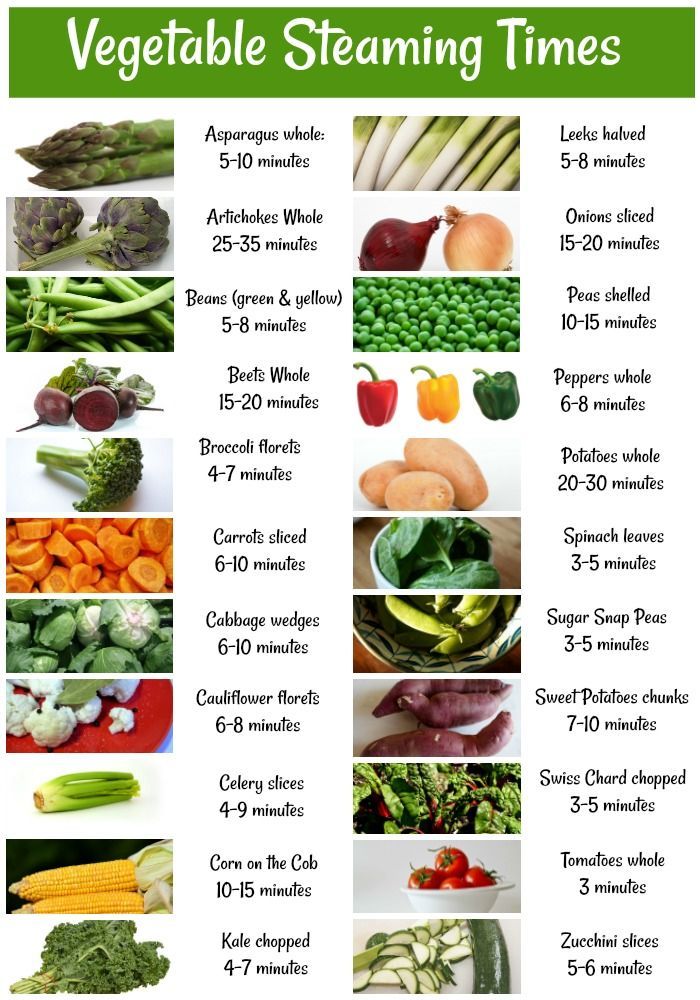
- Carrots - 2 pcs. medium
- Bulgarian pepper - 1 pc.
- Broccoli - 1 pc. inflorescence
- Eggplant - 1 pc.
- Lemon peel - 1 tbsp.
- Salt - 0.5 tsp large
- Seeds - 1 tsp linen
- Black pepper - 4 pcs. peas
- Olive oil - 3 tbsp.
- Garlic - 2 teeth
Preparation: Step 1
-
Steam all ingredients for vegetables in a steamer. Vegetables can be completely different, only the cooking time will be different.
For more clarity, the cooking time of different vegetables in a double boiler will be given in a column:
Corn - 10 minutes
Bell pepper - 10 minutes
Eggplant - 10-12 minutes
Broccoli - 5-10 minutes
Carrots - 15 minutes (small pieces no more than 3 cm thick).
From this we can conclude that the vegetables that I will cook today are cooked for approximately the same amount of time, which is very convenient - you do not need to put several floors in the double boiler.
 It is enough to lay out the vegetables in layers, those that take longer to cook on the bottom, and the fastest ones on the top.
It is enough to lay out the vegetables in layers, those that take longer to cook on the bottom, and the fastest ones on the top. Cooking time for other vegetables:
Green beans - 5-12 minutes
Beets - 30-50 minutes
Asparagus - 4-8 minutes
Pumpkin - 15-30 minutes
Potatoes - about 30 minutes, depending on size.
-
Step 2
A vegetable that requires special handling from the list is eggplant. It must be soaked in cold salted water to remove the bitterness. Therefore, you need to prepare a saline solution: take 1 tablespoon of salt per 1 liter of water and dip the prepared washed and cut eggplants into a bowl with this solution. Leave for 10 minutes, and after the specified time, remove the vegetables and put on a paper towel, we do not need excess moisture.
-
Step 3
Corn turn. The cob must be cleaned and rinsed under water, then cut into 3 cm segments.
-
Step 4
My carrots are young, not overgrown, straight from the garden.
 It needs to be thoroughly washed and scraped with a knife, however, you should not peel such young carrots with a vegetable peeler, it will remove too much. If you have ordinary carrots, then you should peel it in any way and cut into washers 3-4 cm thick.
It needs to be thoroughly washed and scraped with a knife, however, you should not peel such young carrots with a vegetable peeler, it will remove too much. If you have ordinary carrots, then you should peel it in any way and cut into washers 3-4 cm thick. -
Step 5
Wash the broccoli well and separate into florets, then check for insects. If there are such suspicions, you need to do the same as with the eggplant - lower it into a saline solution, and all living creatures will float up.
-
Step 6
Bell peppers, washed and cut into segments, 1.5-2 cm wide.
-
Step 7
Pour water into the steamer, according to the instructions into the electric one, and just 1 liter into the pot. Turn on the stove, then arrange the vegetables in such a way that the carrots are on the bottom, then the eggplant, after the bell pepper, corn and finally the broccoli. If you have an electric steamer, then you need to decompose the vegetables first, then turn on your steamer.











